—How would you define television?
—Oh, it’s just movable print!11 Stated in 1985–1986 to Alan Jones, as cited in “Télévision: une interview d’Andy Warhol,” Art Press, 199, February 1995.
Andy Warhol
Fascinated by the coercive power of mass media, Andy Warhol never labored under the illusion that television could be anything other than an extension of the pictorial press. Initially broadcast over a public access New York cable station, then later on MTV, the series of programs he produced from 1979 to 1987 are moreover all creative offshoots of his magazine Interview, created in 1969.22 Fashion was aired from 1979–1980 on Manhattan Cable TV, Channel 10; Andy Warhol’s TV, was broadcast over two seasons, from 1980 to 1983 on Manhattan Cable TV, Channel 10, then at Madison Square Garden; Andy Warhol’s Fifteen Minutes was aired from 1985 to 1987 on MTV. For this Pop artist, it was less a matter of inventing a new mode of expression than blending in with the ultra-standardized world of TV. Magazines, fiction, soap operas, ads, news, reportage, clips, talkshows, variety shows: the program schedule leaves little place for creations that do not correspond to the codes of these highly formatted genres. Visual experiments that do not fall within the parameters of these codes are generally not welcomed on television, especially when they attack the integrity of the sacrosanct tenets of photorealism, the guarantor of the mainstream public’s devotion to media spectacle. Nevertheless, until the 1990s, some breaches subsisted on the French audiovisual landscape into which creators could make their way, such as credits, themes, interludes or ads, all of which comprise what we refer to today as a format. Because they propose no content, initially these areas had been neglected by programmers before they were eventually locked into the promotional ideology, as visual identity became an increasingly important commercial issue for the networks.
The Question of Visual Identity
In 1974, the dismantling of the Office de Radiodiffusion-Télévision Française (ORTF) plunged French television networks into a competitive economy through the creation of three network television companies: TF1, Antenne 2 (A2) and France Régions 3 (FR3). As they sought to distinguish themselves from the competition, the networks began to think more than ever about their image. Their distinctiveness was of course predicated on programming choices, but also their format. This is why, as early as January 1975, Antenne 2 unveiled their new logo, created by painter Georges Mathieu, and began to run opening and closing credits designed by Jean-Michel Folon. 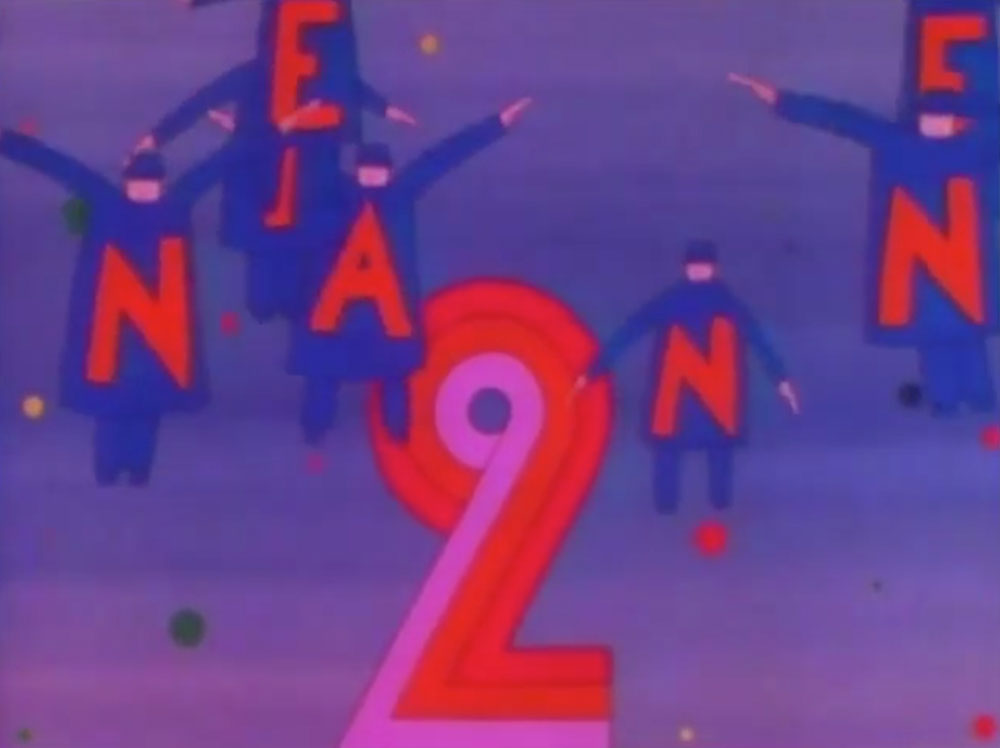 Suspended amidst the weightlessness of a blue sky dotted with multicolored dots, the flying men conceived by Folon enjoyed one advantage: unlike TF1, A2 broadcast in color.
Suspended amidst the weightlessness of a blue sky dotted with multicolored dots, the flying men conceived by Folon enjoyed one advantage: unlike TF1, A2 broadcast in color.
Until 1983, FR3 only broadcast three or four hours of programming per day. Gérard Marinelli was commissioned to design their format, and his graphic designs have become iconic thanks to the success of the magazine program Thalassa. Marinelli is in fact the author of these famous credits, which consist of a metamorphic procession of seashells, scuba suits, compasses and other such emblems of the marine world, all drawn by hand and animated to morph seamlessly with the help of a computer from the British Army.33 Tony Côme and Charles Villa, “Looking for Marinelli, pionnier français du générique télé,” Strabic, January 7, 2019, http://b-o.fr/come-villa The result was sober and effective, like the image of the blue, black and white network logo inscribed within the hexagonal retina of a darkly outlined eye.
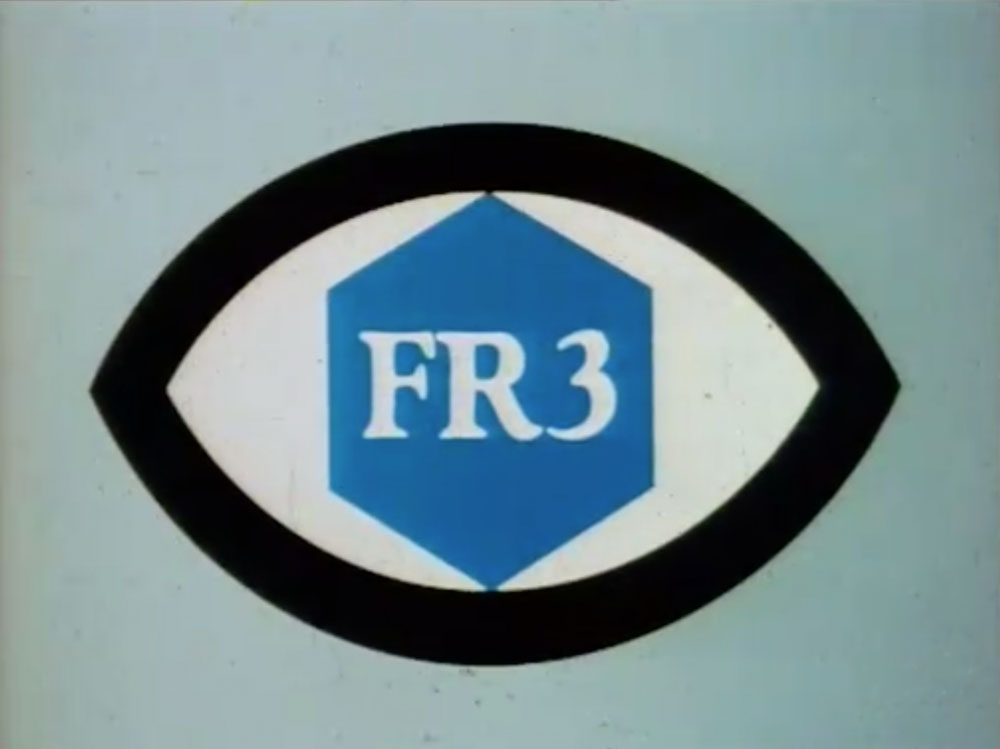 The austerity of that eye, with its central hexagon that symbolized FR3’s territorial foothold, was in complete contrast to the psychedelic eyes Catherine Chaillet designed for TF1.
The austerity of that eye, with its central hexagon that symbolized FR3’s territorial foothold, was in complete contrast to the psychedelic eyes Catherine Chaillet designed for TF1. 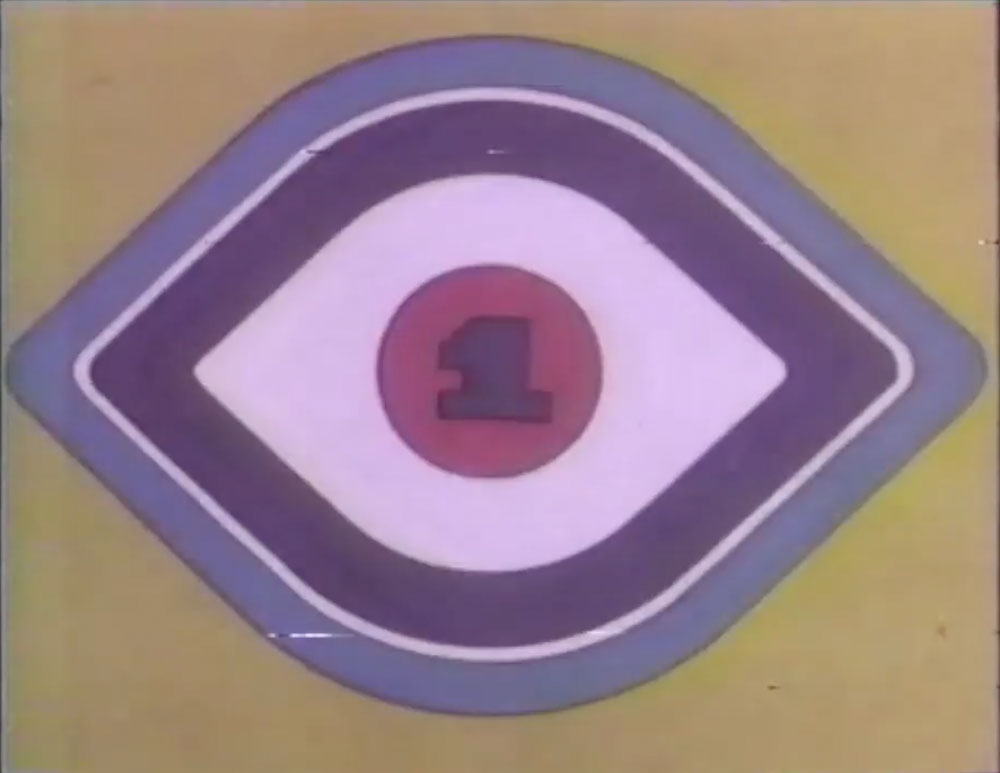 The opening credits for the daily newscast featured colored orbs that interlaced to form a unique focal point. In truth, TF1’s former outdated and conventional format had been hastily updated to contend with the dynamic Antenne 2. The playful bubble script that Chaillet designed for the new logo upended the respectability traditionally ascribed to the historic first channel.
The opening credits for the daily newscast featured colored orbs that interlaced to form a unique focal point. In truth, TF1’s former outdated and conventional format had been hastily updated to contend with the dynamic Antenne 2. The playful bubble script that Chaillet designed for the new logo upended the respectability traditionally ascribed to the historic first channel. 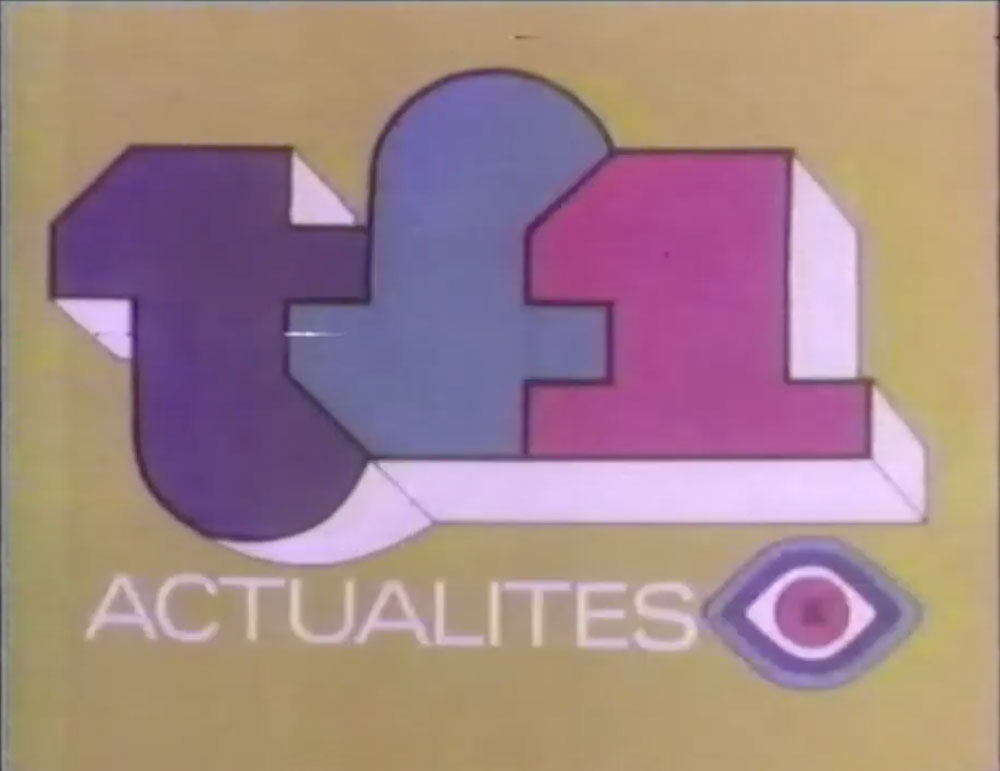
While the question of the visual identity of French networks was henceforth raised, it was not until generators of digital effects came on the scene that the televisual landscape truly began its metamorphosis. TF1 had already invested in computer-generated images from America when it switched to color in 1976, 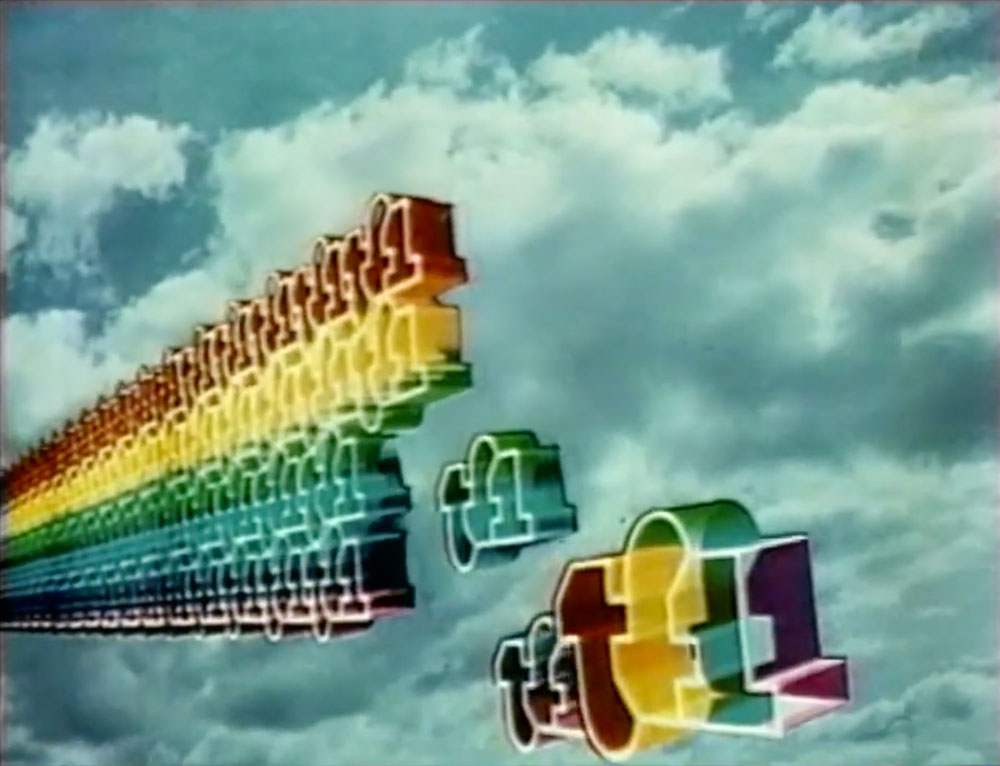 but the movement truly got underway in the first half of the 1980s. In 1983, at Antenne 2, a cosmic ballet of geometrical figures pushed Folon’s peaceful flying men out of the sky.
but the movement truly got underway in the first half of the 1980s. In 1983, at Antenne 2, a cosmic ballet of geometrical figures pushed Folon’s peaceful flying men out of the sky. Networks sought to update their commercial image. The modernization of equipment was not the only factor. The 1982 law on audiovisual communication effectively ended the monopoly of the state, and the competition between network companies escalated. The need for advertising became crucial in order to finance the creation of new programs for the ever-increasing on-air hours of the three networks. The extension of the time slot accorded to advertising legitimated the dictates of audience ratings, so crucial to advertisers. This intensified the rivalry between TF1 and Antenne 2. Furthermore, the public networks had to contend with the launch of a fourth channel whose creation was announced in 1982. This was Canal+, a private, pay-TV network whose survival would depend upon its capacity to attract subscribers.
When it launched in 1984, Canal+ did not have the budget required to dive into the breach of nouvelles images.44 On the subject and the history of this term in France, see Cécile Welker, La fabrique des ‘nouvelles images’: l’émergence des images de synthèse en France dans la création audiovisuelle (1968-1989), directed by Bruno Nassim Aboudrar, École Doctorale Arts et Médias – Institut de Recherche sur le Cinéma et l’Audiovisuel, (PhD diss., Sorbonne Nouvelle University, Paris 3, 2015), accessible on the TEL web portal, http://b-o.fr/welker While TF1 was playing the futuristic card with its newly-designed logo in a metallic electric blue, 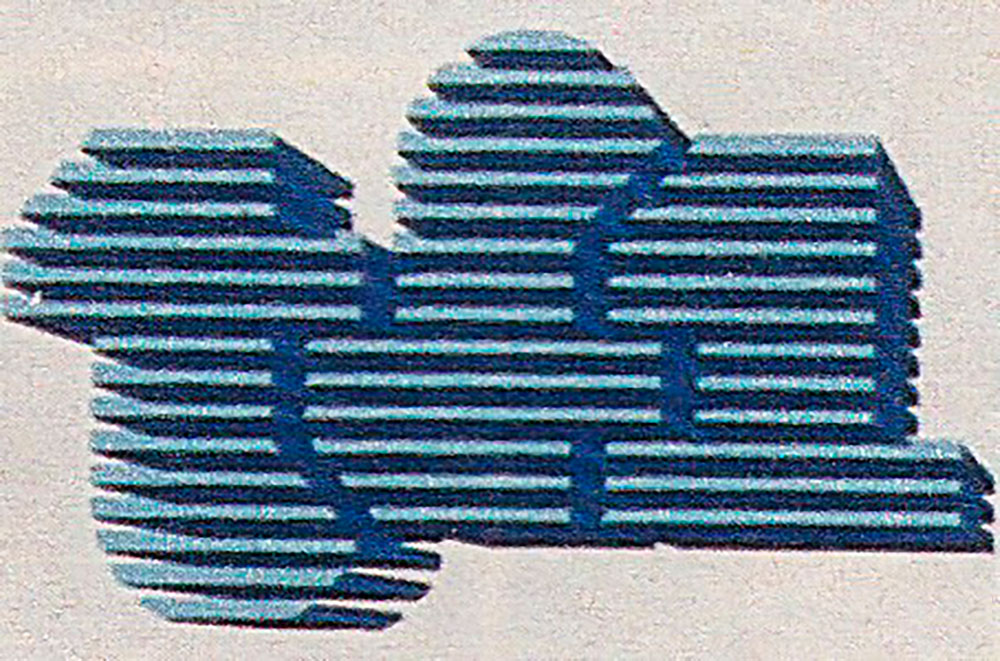 the pay-TV network looked to the historical avant-garde of graphic design in the form of a graphic charter conceived by designer Étienne Robial, who based his concept on the interaction between the lettering, a black background and the rhythm of the display.55 See the interview with Étienne Robial: “Thanks for Nothing, Adobe!” Back Office #1: Making Do, Making With, 2017, 50-65. Whether through the use of certain typefaces, or the hypnotic revolving ellipse of the ads, a touch of color illuminated a format based upon the tension between black and white.66 See Valentin Socha’s montage Derrière le plus : l’histoire de l’habillage de Canal+, http://b-o.fr/socha The issue was not just the construction of a distinctive visual identity, but also the ability to diffuse it on any medium available, from screen to print, by way of the company logo. Thus, Robial reprised the concept—already explored in the initial credits for the televised magazine Les Enfants du Rock (1982)
the pay-TV network looked to the historical avant-garde of graphic design in the form of a graphic charter conceived by designer Étienne Robial, who based his concept on the interaction between the lettering, a black background and the rhythm of the display.55 See the interview with Étienne Robial: “Thanks for Nothing, Adobe!” Back Office #1: Making Do, Making With, 2017, 50-65. Whether through the use of certain typefaces, or the hypnotic revolving ellipse of the ads, a touch of color illuminated a format based upon the tension between black and white.66 See Valentin Socha’s montage Derrière le plus : l’histoire de l’habillage de Canal+, http://b-o.fr/socha The issue was not just the construction of a distinctive visual identity, but also the ability to diffuse it on any medium available, from screen to print, by way of the company logo. Thus, Robial reprised the concept—already explored in the initial credits for the televised magazine Les Enfants du Rock (1982) — of intertitles of typographical characters,77 The term is deliberately appropriated from silent film. with fonts selected according to the content of the time slot in question (cinema, sports, children’s programming, etc.).
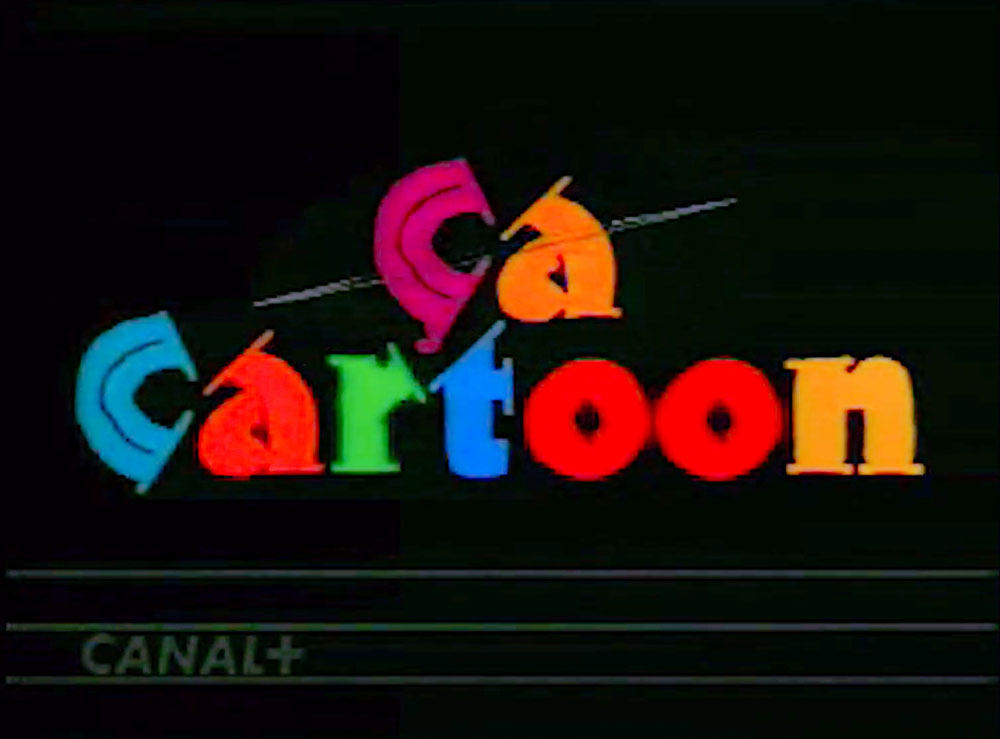 For the design of his alphabets, Robial unhesitatingly looked for inspiration to the visual communication of the 1920s, for example the 1928 typography used for Lenzburg jams, which he used for televised advertising insets.88 See Étienne Robial, Marie-Pierre Guiard, CANAL+: image graphique et identité visuelle, Graphic Image and Visual Identity (Paris: Canal+, 2001), 207. As for the Canal+ logo, his use of the Futura font designed by Paul Renner attested to his desire for readability, which was consequently enhanced by the coherent system elaborated by Robial. Highlighted by two narrow bands within which the logo might or might not be displayed, the screens read like newspaper headlines. The homogeneous nature of this concept stood out in the televisual landscape since, as journalist Marie-Pierre Guiard perspicaciously noted, “no French television network had at that point approached the issue of projecting a coherent, uniform image.”99 Marie-Pierre Guiard, cited in CANAL+: image graphique et identité visuelle, ibid., 21. Although logos, interludes, station identifications, and other credits had attracted attention, at that point, public television stations had not yet standardized the concept of a uniform format. Robial’s genius lay in a conception based upon the tenets of publishing:
For the design of his alphabets, Robial unhesitatingly looked for inspiration to the visual communication of the 1920s, for example the 1928 typography used for Lenzburg jams, which he used for televised advertising insets.88 See Étienne Robial, Marie-Pierre Guiard, CANAL+: image graphique et identité visuelle, Graphic Image and Visual Identity (Paris: Canal+, 2001), 207. As for the Canal+ logo, his use of the Futura font designed by Paul Renner attested to his desire for readability, which was consequently enhanced by the coherent system elaborated by Robial. Highlighted by two narrow bands within which the logo might or might not be displayed, the screens read like newspaper headlines. The homogeneous nature of this concept stood out in the televisual landscape since, as journalist Marie-Pierre Guiard perspicaciously noted, “no French television network had at that point approached the issue of projecting a coherent, uniform image.”99 Marie-Pierre Guiard, cited in CANAL+: image graphique et identité visuelle, ibid., 21. Although logos, interludes, station identifications, and other credits had attracted attention, at that point, public television stations had not yet standardized the concept of a uniform format. Robial’s genius lay in a conception based upon the tenets of publishing:
I created a structure much as I would have for a book: the initial stage was to create a cover design, the table of contents represented the presentation credits, and, after that […] followed a hierarchy of letters and the news.1010 Étienne Robial, donation de l’ensemble du processus de création de l’identité visuelle de Canal+, 1984-2009, a series of interviews with Étienne Robial produced by CNAP, uploaded to YouTube on November 4, 2019, http://b-o.fr/robial
The Screen as Electronic Page
Robial was not the first to have had the intuitive notion of the electronic page. Director Jean-Christophe Averty was actually moving in that direction when he began to explore the possibilities of matte keying. As early as the late 1950s, when formatting his jazz shows, Averty made use of the first special effects board, developed by Radio-Industrie in 1958, which enabled him to create a wipe in order to set up onscreen matte shots to produce a luminance effect.1111 See Anne-Marie Duguet, Jean-Christophe Averty, (Paris: Dis-Voir, 1991), 77. Today Averty is remembered as the man who scandalized the French bourgeoisie when he featured a recurring sequence of a (celluloid) baby being put through a grater on his 1963 series Les Raisins Verts (The Green Grapes). The program was intended to bring the irreverence of the satirical journal Hara-Kiri to television. Imbued with the spirit of Dadaism and Surrealism, his dramatizations, adapted from French and foreign literature, surprised, and often offended, his television audience. From Ubu Roi 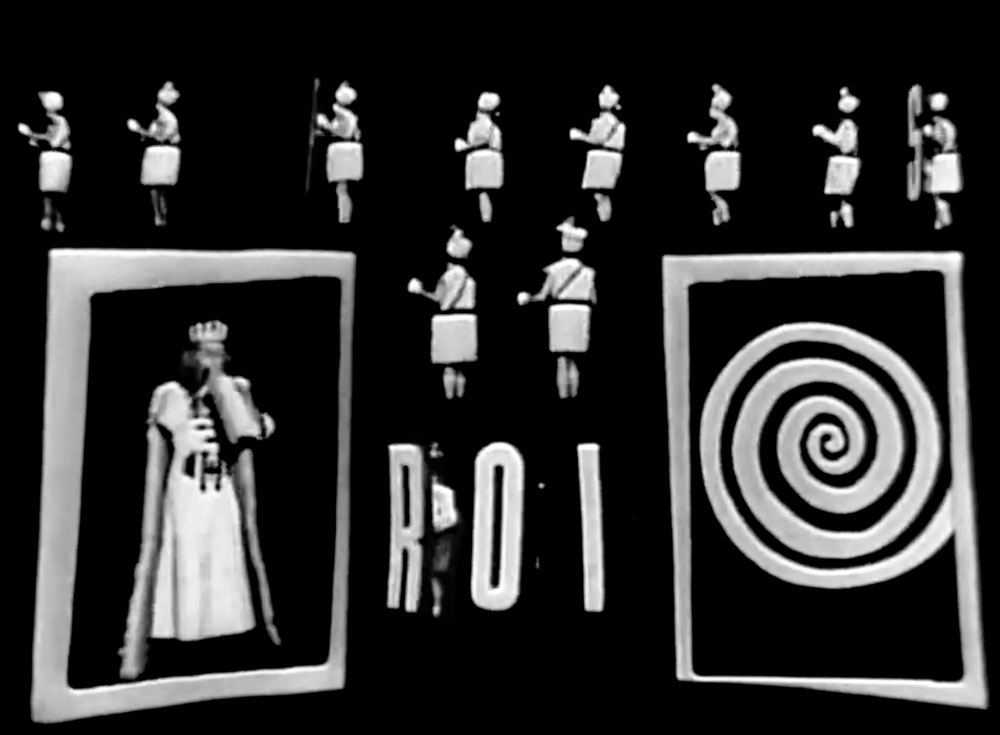 to The Breasts of Tiresias1212 Jean-Christophe Averty, Les Mamelles de Tirésias, (The Breasts of Tiresias), 1982, 57’, color, TF1, aired on June 24, 1982 at 9:10 PM. by way of A Midsummer Night’s Dream,1313 Jean-Christophe Averty, Le Songe d’Une Nuit d’Eté (A Midsummer Night’s Dream), 1969, 2h20’, color, 2nd channel, aired on December 25, 1969 at 9:11 PM. his televised plays were distinctive in their form, sometimes comparable to illumination, where the screen transformed into a page featuring text in tandem with silhouettes that had become signs. Having become an expert at the matte shot, Averty offered viewers a lavish image, reminiscent of collage, that was radically opposed to the standard of photographic realism dominating commercial filmmaking and the esthetics of filmed theater that was still driving dramatic presentations in the early 1970s, before the proliferation of the TV series. Averty justified his penchant for two-dimensional graphics thus:
to The Breasts of Tiresias1212 Jean-Christophe Averty, Les Mamelles de Tirésias, (The Breasts of Tiresias), 1982, 57’, color, TF1, aired on June 24, 1982 at 9:10 PM. by way of A Midsummer Night’s Dream,1313 Jean-Christophe Averty, Le Songe d’Une Nuit d’Eté (A Midsummer Night’s Dream), 1969, 2h20’, color, 2nd channel, aired on December 25, 1969 at 9:11 PM. his televised plays were distinctive in their form, sometimes comparable to illumination, where the screen transformed into a page featuring text in tandem with silhouettes that had become signs. Having become an expert at the matte shot, Averty offered viewers a lavish image, reminiscent of collage, that was radically opposed to the standard of photographic realism dominating commercial filmmaking and the esthetics of filmed theater that was still driving dramatic presentations in the early 1970s, before the proliferation of the TV series. Averty justified his penchant for two-dimensional graphics thus:
the electronic image is far closer to trichromatic or four-color process printing than to film.1414 This quote by Averty can be found in a press clipping rediscovered in the archives of the Inathèque entitled “Averty se confie à Jérôme Diamant-Berger,” Vidéo News, March/April 1981, 46-49.
In the 1960s, Averty applied his principles to the field of variety shows. In 1965, in his first show starring Yves Montand, entitled Happy New Yves,1515 Jean-Christophe Averty, Happy New Yves, 1964, 46’, black and white, sound, ORTF, 1st channel, aired on January 1, 1965 at 8:25 PM. Averty already showed himself to be a confirmed user of spliced visuals, even substituting the singer’s head with a plate then an apple core. From that point on, this technique enabled Averty to handle audiovisual formats in the same manner as print. Even so, he did not give up working on the dialogue between picture composition and scenery, which was often reduced to the use of a few objects conducive to optical effects highlighted by powerful contrasts of black and white. The director soon began to introduce graphic elements, prints and reproductions of works of art into his visual compositions. In 1967, in Ça C’Est Claude François,1616 Jean-Christophe Averty, Ça C’Est Claude François, 1967, 1h03’, black and white, sound, ORTF, 1st channel, aired on May 27, 1967 at 9 PM. Averty appropriated an 1815 Épinal print entitled Les Degrés des Âges, in order to illustrate the song Toute la Vie, sung by Claude François. During the entire song, the face of the singer in close-up is detached onto a disc that is layered onto the image of the print, cut into vertical strips. As the background unfolds, one notices that half the strips reveal the print, and half its solarized negative.1717 Solarization consists of inversing the light values of an image. It’s a time-honored practice that Man Ray used a great deal in classic film photography. Some shout-outs reveal Averty’s dark sense of humor, such as this passage where, as the pop idol was singing himself hoarse about “wanting to be married, yet needing to know everything beforehand,” the director projects his silhouette against the backdrop of the first page of the complete works of the Marquis de Sade.
Matte shots enabled Averty to free himself a bit more from the set, in order to further explore his graphic experimentation. Miniaturized at the whim of the director, now humans could be on the same page effortlessly. With the arrival of color, kinetic effects, drawing and solid flashy colors began to flood Averty’s compositions, as one can see in the many music clips made for the magazine program Au Risque de Vous Plaire (1966–1973), which presented the latest hits punctuated by absurd sketches. A frequent borrower, Averty enthusiastically appropriated his motifs from other artists, from the exuberant Nanas of Niki de Saint Phalle to the enigmatic bull created by Leonetto Cappiello for the iconic 1931 Bouillon Kub poster. 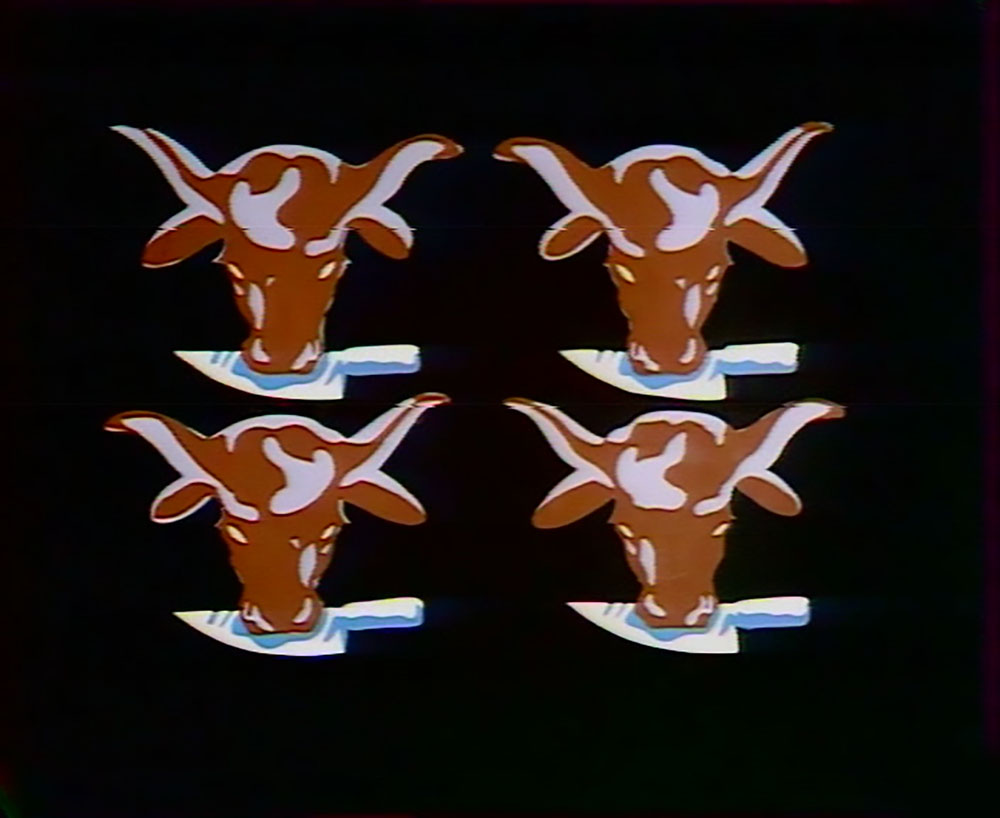 Their invocations resonate over the airwaves like a cathodic apology for artistic reproductibility.
Their invocations resonate over the airwaves like a cathodic apology for artistic reproductibility.
The Monitor as a Box of Light
Averty was far from being universally popular with network directors. Despite that, out of all the pioneers of experimentation in French television, he is the one who achieved the greatest visibility. Even so, other artists dreamed of making television into a laboratory for research, such as Nicolas Schöffer, who wished to make use of the redundancy of programs to insert an interlude into the programming schedule entitled Préparation au Sommeil (Preparation for Sleep). 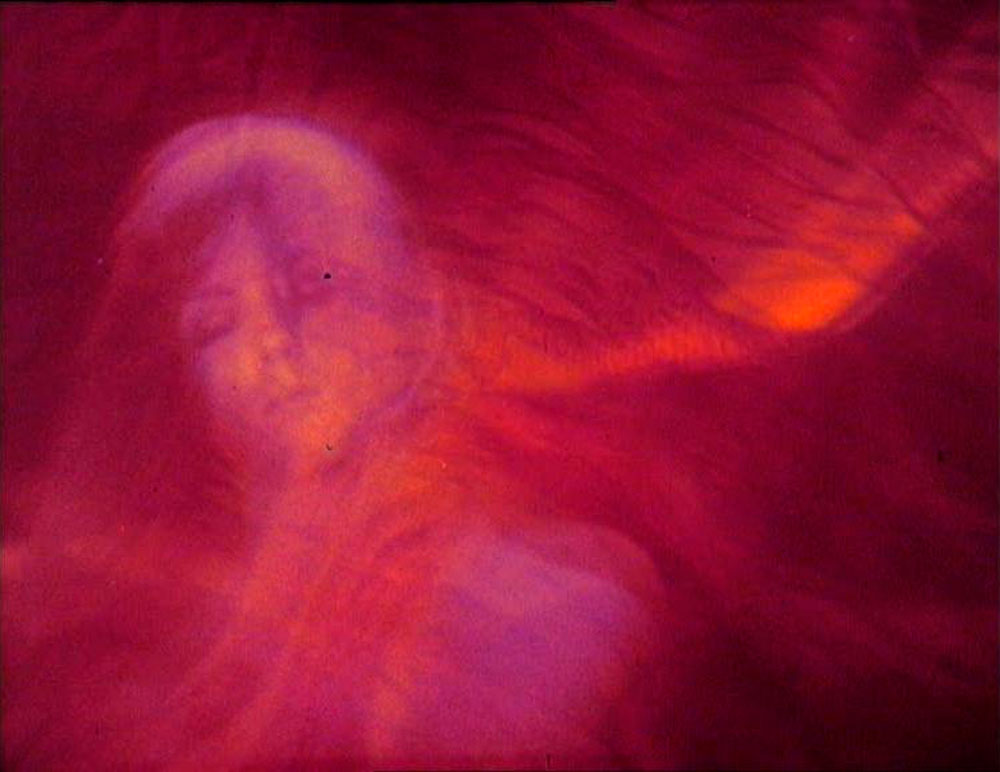 Each evening, as the channel signed off, the face of a beautiful woman suffused with a halo of bluish pink waves was intended to gently ease viewers into the arms of Morpheus. Completed in 1967, the pilot was never aired. A few years before, Schöffer had already taken a stab at formatting variety shows. In 1961, the president of RTF had in fact commissioned the sculptor to stage a mise en scène of abstract images obtained with the Luminoscope, a device created by Schöffer which generated its own light and color effects using motorized mobile sculptures. It looked like a box equipped with a translucent side, with a transparent screen for receiving kinetic and light compositions generated by an internal mechanism. The finalized program, entitled Variations Luminodynamiques1818 Nicolas Schöffer, Jean Kerchbron, Variations Luminodynamiques, 1961, 9’56”, black and white, sound, RTF, aired on October 25, 1961 at 9:10 PM, http://b-o.fr/variations combined images of the luminous ballet filmed on the screen of the Luminoscope with other shots. Since, at the time, broadcasts were limited to black and white, only the light show produced by the Luminoscope could be fully appreciated by a television audience.
Each evening, as the channel signed off, the face of a beautiful woman suffused with a halo of bluish pink waves was intended to gently ease viewers into the arms of Morpheus. Completed in 1967, the pilot was never aired. A few years before, Schöffer had already taken a stab at formatting variety shows. In 1961, the president of RTF had in fact commissioned the sculptor to stage a mise en scène of abstract images obtained with the Luminoscope, a device created by Schöffer which generated its own light and color effects using motorized mobile sculptures. It looked like a box equipped with a translucent side, with a transparent screen for receiving kinetic and light compositions generated by an internal mechanism. The finalized program, entitled Variations Luminodynamiques1818 Nicolas Schöffer, Jean Kerchbron, Variations Luminodynamiques, 1961, 9’56”, black and white, sound, RTF, aired on October 25, 1961 at 9:10 PM, http://b-o.fr/variations combined images of the luminous ballet filmed on the screen of the Luminoscope with other shots. Since, at the time, broadcasts were limited to black and white, only the light show produced by the Luminoscope could be fully appreciated by a television audience.
Unlike Averty, Schöffer did not view the television screen as an electronic page, but rather a window opening onto a horizon of luminous energies whose effects the artist must learn to master. Rightly so, since the workings of an analog television set were more akin to a light box: technically the cathodic image is the product of a bombardment of electrons that imprint their light signature upon phosphor dots behind the screen. Artists who experimented with electronics consequently discovered the plasticity of an image whose metamorphic potential was immense—one had merely to modify the signal to see an image transform live in real time. The trailer for Antenne 2, created by Peter Foldès in 1975, takes into account this fascination for the elasticity of electronic media. The network logo appears in turn to be clear or distorted, as if sucked in then tossed back by the waves generated by a magma of psychedelic colors that swirl in the background.1919 The clip’s similarities with certain passages of the author’s animated video Narcissus/Écho (1971) lead us to suppose that Foldès created the trailer with the Computer Image Corporation computer in England, particularly with regard to the typographic animation. http://b-o.fr/foldes
Foldès was a painter and filmmaker who began experimenting with the videographic medium in 1967, when he was working for Service de Recherche, the research department of the ORTF. Created by composer Pierre Schaeffer in 1959, this department opened its doors to a group with a variety of professional profiles ;musicians, technicians, artists, to name but a few. They worked under the aegis of several groups, such as the Groupe de Recherche Image (GRI), specifically dedicated to audiovisual experimentation. It was within this context that Foldès conceived his first synesthetic works which explored the interactions between dance and electronic effects. In 1968, one of his videos, entitled Epatozoïdes 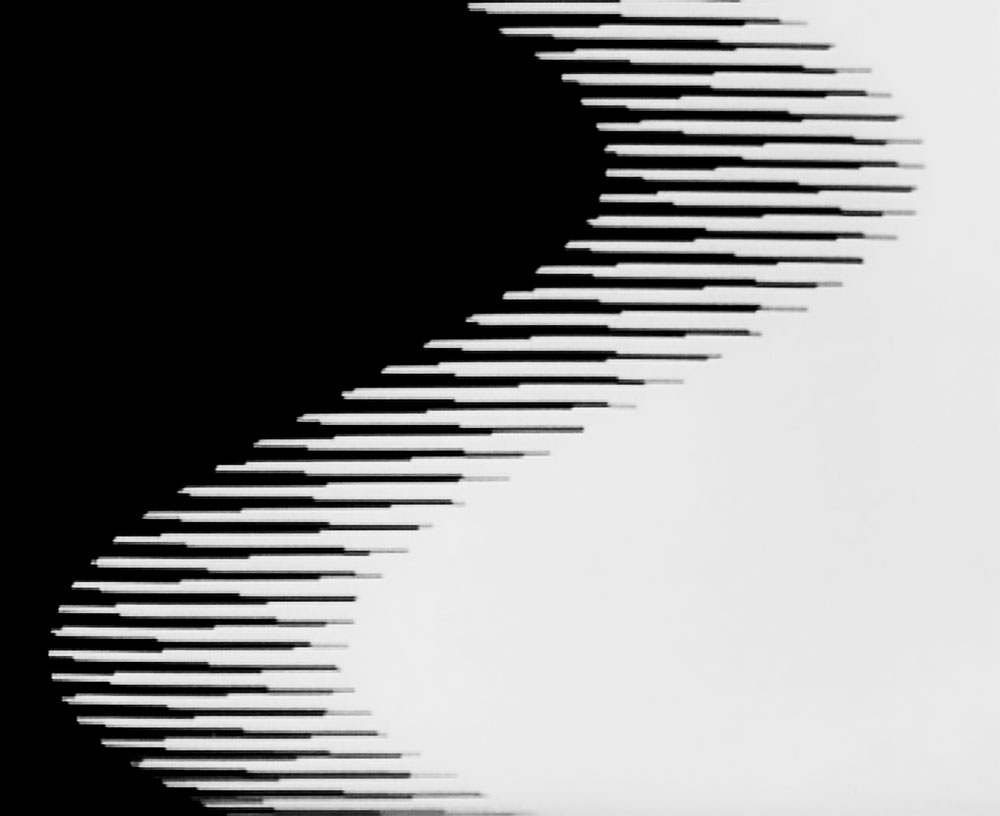 was used as an interlude on TF1. In order to create this essentially abstract opus, Foldès elaborated a procedure that consisted of introducing an audio signal into the cathodic tube. In essence, the graphic patterns that oscillated on the screen were generated by the vibrations of two guitars playing a tune by Giorgos Zambetas.2020 As Grégoire Quenault underlines in his thesis: “although electronic forms are in essence a visual transcription of the music, it is not a matter of its continuous visual materialization […]. The film is obviously the result of a montage […] of selected moments.” Reconsidération de l’histoire de l’art vidéo à partir de ses débuts méconnus en France entre 1957 et 1974, diss. PhD, directed by Claudine Eizykman, École Doctorale d’Esthétique, Sciences et Technologie des Arts, (Université de Paris 8, 2005), 411. Suffused alternately in black and white, ellipses and lozenges quiver, bursting into rows of contrasted sinusoid curves whose brilliance tickled the retinas, approaching optical art and bringing to mind the black and white painted cascades created by Bridget Riley in the 1960s.
was used as an interlude on TF1. In order to create this essentially abstract opus, Foldès elaborated a procedure that consisted of introducing an audio signal into the cathodic tube. In essence, the graphic patterns that oscillated on the screen were generated by the vibrations of two guitars playing a tune by Giorgos Zambetas.2020 As Grégoire Quenault underlines in his thesis: “although electronic forms are in essence a visual transcription of the music, it is not a matter of its continuous visual materialization […]. The film is obviously the result of a montage […] of selected moments.” Reconsidération de l’histoire de l’art vidéo à partir de ses débuts méconnus en France entre 1957 et 1974, diss. PhD, directed by Claudine Eizykman, École Doctorale d’Esthétique, Sciences et Technologie des Arts, (Université de Paris 8, 2005), 411. Suffused alternately in black and white, ellipses and lozenges quiver, bursting into rows of contrasted sinusoid curves whose brilliance tickled the retinas, approaching optical art and bringing to mind the black and white painted cascades created by Bridget Riley in the 1960s.
Other videographic experiments, which remained confidential for the most part, were conducted at the GRI. In 1968, technician Michel Davaud also designed some interludes.2121 Interlude I, II, and III, 1968, video, 4’9”, 3’25” and 4’9”, black and white, sound. His investigations also drew upon music, through the deconstruction of the moves of a drummer and a violinist that were subjected to a variety of electronic effects such as feedback.2222 Similar to a Larsen effect, feedback is the reflection of an electrical signal that creates leakage, notably in terms of the image. This phenomenon is immediately visible when one points the lens of a camera towards the screen of a CRT monitor. The visual output of the GRI researchers did not correspond to any existing program genre (i.e. drama, variety, documentary) and it was difficult to provide a slot for them beyond their use as interludes. Accordingly, any abstract work could serve as a break between two programs, although it seems that Davaud’s works were never aired. Aside from the bizarreness of associating works that resolutely lacked any narrative or discursive aspects with a circuit like television broadcasting, the low definition of the electronic image always put off professionals, who were inhibited by unfavorable comparisons with the film industry. This is why artists who wanted to explore the artistic potential of the medium were consistently denied the airwaves, rejected by the fervent partisans of an audiovisual orthodoxy bolstered by the cult of realism.
Against all expectations, new opportunities presented themselves in the early 1980s, when the networks launched themselves into an unequivocal battle for ratings. They set out on a search for new blood, both in terms of content and format. It was within this context that video maker Hervé Nisic was commissioned to design the credits for Moi Je (1982–1987), a new lifestyle magazine produced by A2. In order to reinforce the appeal of his credits, Nisic decided to emphasize the specific characteristics of electronic images, such as the pulverization of electrons and electronic impulses. The title of the program was displayed in capitals along a network of sputtering frames, worlds apart from the obsequious standards of the audiovisual industry. Shadow puppets and body fragments dialogue from one fragmented shot to another, concluding with a full-screen shot of the cold gaze of a solarized blue face that confronts the viewer. Riding on this success, the video artist went on to do the credits for Psy-show, a proto-reality show launched in 1983 on Antenne 2. This time, Nisic used feedback and colorization to hollow out the image, creating mist and wave effects around two faces, male and female, to such a point that the electrons appear to be brushstrokes.
In 1984, these experiments resulted in the conception of an entire format for the FR3 TV magazine D’Amour et de Kriss.2323 Due to his lack of official status as a director, after Hervé Nisic designed the first two programs in their entirety, he was subsequently replaced by Olivier Bressy then Philippe Nickel, who continued in the same vein. The hostess’ figure was set against graphic backgrounds with gay abandon: rasters animated by electronic stripes, double exposures, waves, or forests of motifs multiplied in feedback. For example, in order to compose the background of the credits, Nisic associated fine raster feedback with parallelepipeds obtained with Spectron, an English synthesizer capable of generating raster effects and geometric graphics. The video artist did not hesitate to make use of the materiality of the effects that so frightened the proponents of audiovisual neutrality.
The Pulsating Image
In the first half of the 1980s, the fact that producers are open to such eccentricities owes a great deal to the rise of the music industry. The vogue of music videos began to sweep the airwaves, while, in 1981, the American network MTV had just launched its cable channel. Music and video made good bedfellows, and lent a breath of fresh air to networks that were thenceforth quicker to tolerate audiovisual deviance from the norm.
Some programs specializing in pop culture decided to take a closer look at the fringe productions of video artists. This was particularly true of the TV magazine Haute Tension (1982–1984). It was broadcast on Antenne 2 as part of the music program Les Enfants du Rock. Dedicated to the underground Punk and New Wave movements, the time slot was run by a generation of programmers who had been raised on the small screen, rock and roll and comic strips. The co-directors of the program, Alain Burosse, Bertrand Mérino-Péris and Michel Eli, took the liberty of inviting artist Laurie Anderson in for a studio performance, and rebroadcasting teasers by young video artists between film clips. The credits, which were created based upon a black and white Polaroid portrait taken at the tomb of a young boy, were modified for each episode. The grave visage of the child with his piercing stare was thus subjected to several electronic effects: scarring using feedback, transformation into a tactile keyboard, adorned with lipstick, embedded with hieroglyphs, etc.
After being appointed as Director of Short Programs at Canal+, Burosse went on to advocate for alternative audiovisuals at the pay cable network, broadcasting original works and producing TV magazines dedicated to video creations, such as Avance sur Image (1988–1989). Moreover, artist Patrick De Geetere ;who was working on a series of collaborations with the members of the group Tuxedomoon—did the credits for this show. A cube made up of sequences excerpted from his experimental clips floats against a black background. The cube was assembled using ADO (Ampex Digital Optics), a line of special effects generators developed by Ampex that could manipulate two-dimensional images in 3D—pivoting them in the background, pasting them on the sides of a cube—in such as way that a film shot can be treated like a geometric plane.
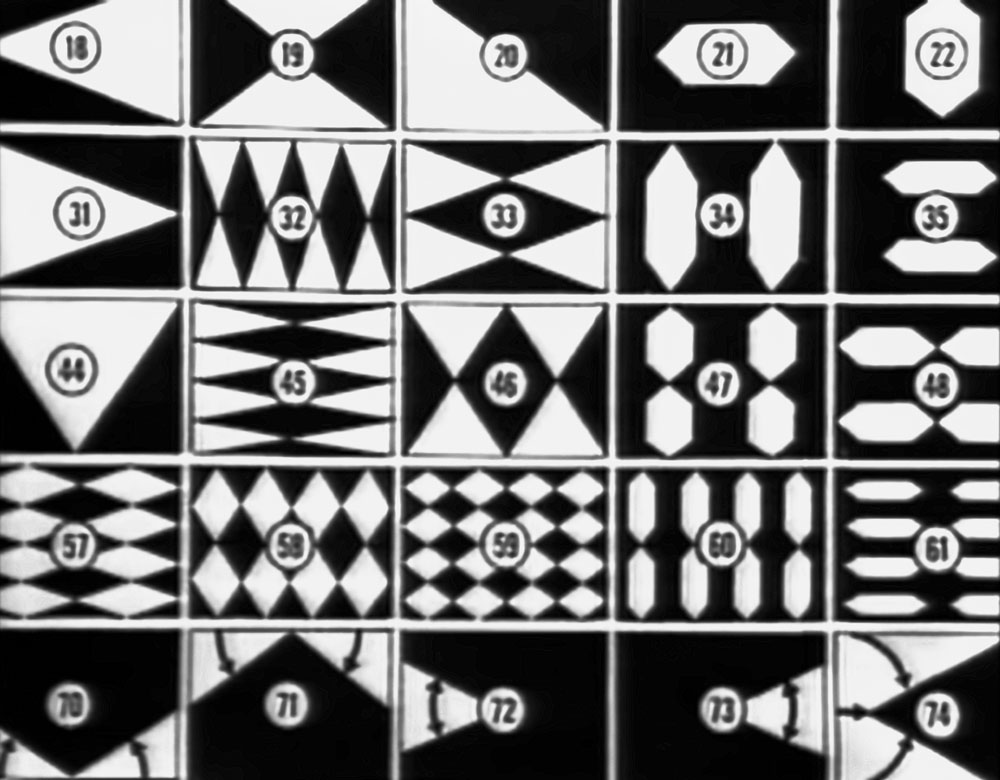 The tool appealed to many of his peers, including Marc Caro, who used it in his first videos.
The tool appealed to many of his peers, including Marc Caro, who used it in his first videos.
Véro Goyaud and Jérôme Lefdup also used ADO to create spots for TV6, taking advantage of the generator’s capacity to open wipes in depth in terms of the perspective of the screen. In this case, the video artists used a shot of water filmed as a realistic image, then they bifurcated the screen with two diving boards that plunged in respective perspective from the upper and lower parts of the image towards the center, and upon which other sequences were superimposed. 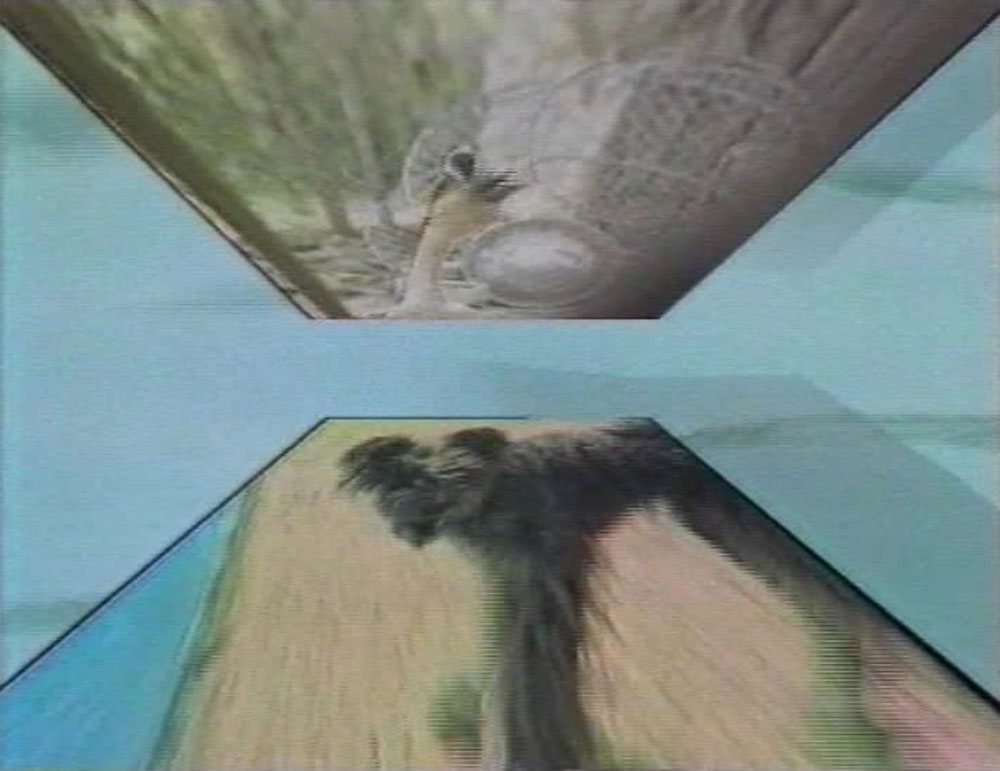 These sound sequences—chickens clucking, dogs barking, or the crash of a dive—were in turn sampled to a rhythm. In the wake of the commercial success of the clip, the exercise of audiovisual mixing is typical of this duo of video artists who, for the first time, attempted to apply this formula to a television commercial.2424 Immediately afterwards, the music clip would be the subject of exhibitions in the major Parisian museums, such as Paysage du Clip, a free exhibit in the basement of the Centre Pompidou from October 2 to November 11, 1985, or New Video Music USA, held at the Musée d’Art Moderne de la Ville de Paris in June 1985. On the same subject, see Marie Vicet, “Quelle place pour le clip vidéo au musée? De sa reconnaissance muséale à sa remise en question, à travers trois expositions françaises (1985-2007),” exPosition, 3, 2017, http://b-o.fr/vicet The time was right, upon its creation, TV6 decided to follow the example of the NRJ radio station and target the youth market through a largely musical program format.
These sound sequences—chickens clucking, dogs barking, or the crash of a dive—were in turn sampled to a rhythm. In the wake of the commercial success of the clip, the exercise of audiovisual mixing is typical of this duo of video artists who, for the first time, attempted to apply this formula to a television commercial.2424 Immediately afterwards, the music clip would be the subject of exhibitions in the major Parisian museums, such as Paysage du Clip, a free exhibit in the basement of the Centre Pompidou from October 2 to November 11, 1985, or New Video Music USA, held at the Musée d’Art Moderne de la Ville de Paris in June 1985. On the same subject, see Marie Vicet, “Quelle place pour le clip vidéo au musée? De sa reconnaissance muséale à sa remise en question, à travers trois expositions françaises (1985-2007),” exPosition, 3, 2017, http://b-o.fr/vicet The time was right, upon its creation, TV6 decided to follow the example of the NRJ radio station and target the youth market through a largely musical program format.
While Jérôme Lefdup is perhaps the French video maker who best captured the level of hysteria of the media feeding frenzy, it is, without a doubt, Éric Coignoux who most pertinently captured the latent aggressiveness of the cathode-ray bombardment. Coignoux attracted the attention of programmers when he was still a student presenting his first film strip, Trashdance, at festivals.2525 Trashdance, 1990, video, 2’27”, color, aired on Canal+ and MTV Europe. His first works in the early 1990s were distinctive due to the brutal aspect of his montages that amounted to a rhythmic punch and visual shout revealing his penchant for punk and humor. In 1992, the Arte network commissioned him to create two teasers, Humor and Coup de Cœur.
They demonstrate his professional approach, which combined the creation of composite images with light video shots, working with computer graphics as well as the animation of his own drawings in a style inspired by the French Figuration Libre movement. In both cases the artist created his videos image by image, using the Paintbox at the Mikros Image post-production studio, where he worked as a graphic designer.
At the time, the Paintbox, developed by Quantel, was the most expensive graphics workstation around, and the most luxurious, with a color palette of 16 million colors. 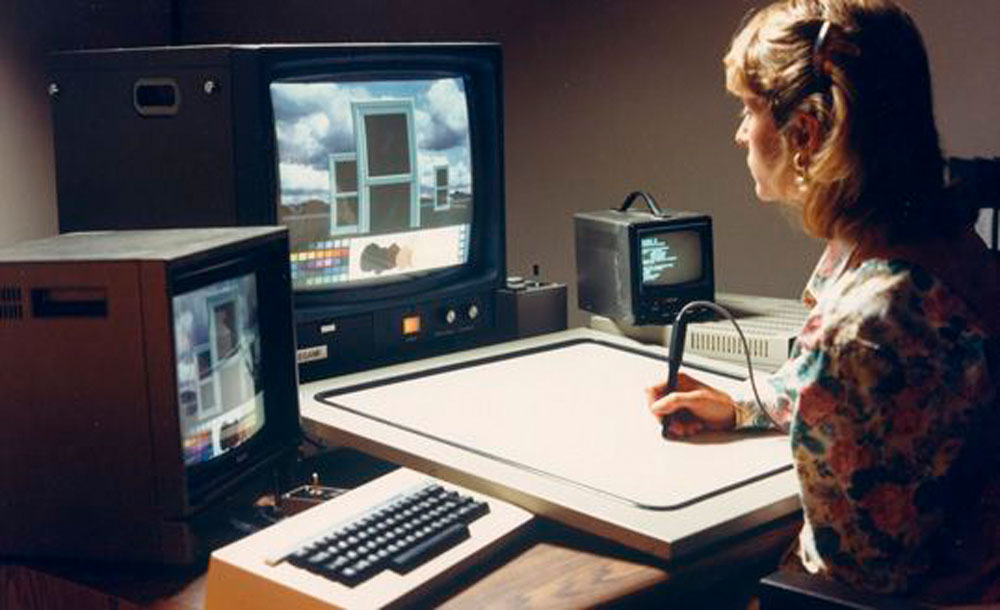 This machine enabled Coignoux to rework his drawings and colorize his image sequences, which were subsequently mixed and animated using a Harry, a high-performance digital generator whose limited memory capacity confined him to working on sequences with a maximum of twelve images per second.2626 The Harry enabled one to animate Paintbox images by mixing the recorded sequences in its memory, where one could stock less than a minute of rushes (depending upon the size of the generated images). In order to clear the memory, it was necessary to record the sequences on a video cassette. This syncopated rhythm, so characteristic of Coignoux’s first production, actually takes advantage of a technical constraint the artist had already encountered when making Trashdance on his Amiga microcomputer, namely insufficient computer memory.2727 Trashdance was entirely created on an Amiga micro-computer. Its core memory was not large enough to animate sequences of more than five images per second. Unlike the Macs of the period, which were still displaying in black and white, the Amiga nevertheless was capable of animating color images with a palette of thirty-two colors.
This machine enabled Coignoux to rework his drawings and colorize his image sequences, which were subsequently mixed and animated using a Harry, a high-performance digital generator whose limited memory capacity confined him to working on sequences with a maximum of twelve images per second.2626 The Harry enabled one to animate Paintbox images by mixing the recorded sequences in its memory, where one could stock less than a minute of rushes (depending upon the size of the generated images). In order to clear the memory, it was necessary to record the sequences on a video cassette. This syncopated rhythm, so characteristic of Coignoux’s first production, actually takes advantage of a technical constraint the artist had already encountered when making Trashdance on his Amiga microcomputer, namely insufficient computer memory.2727 Trashdance was entirely created on an Amiga micro-computer. Its core memory was not large enough to animate sequences of more than five images per second. Unlike the Macs of the period, which were still displaying in black and white, the Amiga nevertheless was capable of animating color images with a palette of thirty-two colors.
What About Creative Liberty?
Today software such as Adobe Photoshop (1990) and Adobe After Effects (1993)2828 See in this issue: Lev Manovich, “After Effects, or Velvet Revolution.” has replaced the machines used at the time, such as Paintbox or Harry, which were only accessible at post-production studios. Their use was billed hourly for exorbitant sums, so artists had limited access to them unless they were working for a television network, or were the beneficiaries of a scholarship. The only other option artists had was to squat the studios, using them outside the technicians work hours. This erratic solution found favor with many video artists like Kiki Picasso, who at one point had managed to obtain a key so he could work at the Riff studio over the weekend.
As early as 1984, this former member of the Bazooka collective discovered his enduring passion for graphic palettes, leading him to pursue every possible opportunity to get close to a Paintbox. Luckily, the doors of Antenne 2 opened up to him in 1986, when producers Tim Newman and Dominique Cantien commissioned him to create teasers for a variety show entitled C’est Encore Mieux l’Après-Midi (1985–1987). 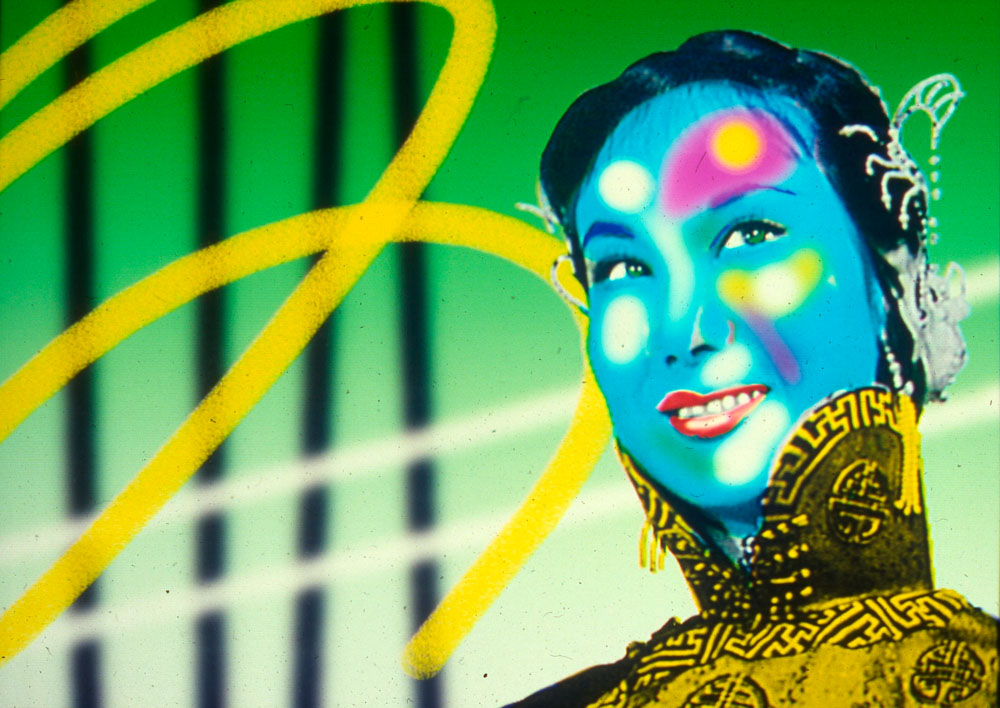 Their assignment was precise: he was to create a provocative teaser each week in the aggressive pop style that had already contributed to the success of Bazooka’s graphics for the newspaper Libération (1977–1978). This was Kiki’s wheelhouse, so he set to work directly, appropriating images that he graffitied, made over and repurposed using the network’s Paintbox. His explosive visual style was full of shout-outs to the Russian avant-garde and Pop Art. His taste for pastiche pushed the satirical range of the shorts which vacillated between playful and menacing, with a touch of soothing propaganda. One notable example were the fireworks of fluorescent colors used for Charles Pasqua, whose opportune figure, made over with an electronic spray, lent his grand finale the allure of a carnival. During this period, when he was finding his own way of commenting on current events, the video artist unashamedly delved into the raw footage on cassettes journalists would send in:
Their assignment was precise: he was to create a provocative teaser each week in the aggressive pop style that had already contributed to the success of Bazooka’s graphics for the newspaper Libération (1977–1978). This was Kiki’s wheelhouse, so he set to work directly, appropriating images that he graffitied, made over and repurposed using the network’s Paintbox. His explosive visual style was full of shout-outs to the Russian avant-garde and Pop Art. His taste for pastiche pushed the satirical range of the shorts which vacillated between playful and menacing, with a touch of soothing propaganda. One notable example were the fireworks of fluorescent colors used for Charles Pasqua, whose opportune figure, made over with an electronic spray, lent his grand finale the allure of a carnival. During this period, when he was finding his own way of commenting on current events, the video artist unashamedly delved into the raw footage on cassettes journalists would send in:
I would spend my nights in the hallways picking up raw footage of the daily news. These consisted of […] raw images for the use of the journalists […]. They often arrived by satellite, and were subsequently recorded, used and immediately tossed. When I wandered around Antenne 2 during the night, I came across cassettes by the square meter! I used them as documentary sources.2929 Citation from an interview with Christian Chapiron, aka Kiki Picasso, April 19, 2012, in Paris.
Unable to satisfy his fantasy of appearing on the evening news, Kiki conceived a number of clips, shorts and formats before going on to found his own production studio in 1988, aptly named Art Force Industrie, whose mission consisted of proving that, in the world of television, “art is simply viable,” and that “there is no reason at all to just make soup, to always remain neutral.”3030 Kiki Picasso, in an interview with Thierry Defert and Jean-Baptiste Touchard, “Kiki Picasso, Art Force Industrie: ‘Liberté totale, l’Art est viable…,’” Pixel, le Magazine des Nouvelles Images, 2, November/December 1988, 53. The studio was fully equipped (Paintbox, Harry, Betacam recorder, flatbed editor, Amiga computer, etc.), which would enable Kiki to create the format for the FR3 summer magazine 40° à l’Ombre de la 3. He had a marked preference for visual stimuli, less flashy than his series of Provoc teasers, more decorative rather and always just as baroque. The video artist even went to the point of signing his credits with an electronic stylus, a gesture that was extremely rare extremely rare in broadcast television. It had the effect of thumbing his nose at the customary cold formality of television networks. What’s more, it was a statement in terms of his status as an artist, as he manifested his refusal to be considered a nameless technician working to order.
It should be underlined that, at a time when questions were being posed about the implications of using a computer for artistic ends, the Paintbox provided an answer to all the critics of electronic technologies by bringing the hand itself, along with all of its panoply of gestures, to the heart of video creation—up to and including a signature. Thanks to the possibility the machine provides of observing the gesture of the artist as if it were live, the tutelary figure of the painter could now move once again to center stage, carrying with it the legend of its singularity.3131 Paintbox was equipped with a tablet made up of a network of sensors for detecting the positioning of the stylus which is itself sensitive to the pressure of the hand. Even as it takes shape, the figure traced upon the tablet then is displayed on a computer screen. This system enabled one to layer additional drawings upon the image produced and directly manage the layers, modifying the image extensively, point by point, simply by changing a bit of data, i.e. line thickness, modifying the color, etc. However, it should be emphasized that working on a Paintbox of the period was a far cry from being as fluid as a graphics tablet today. In 1988, the argument did indeed appeal to Canal+, who went on to order a series of interludes from Roberto Matta, taking advantage of the Chilean painter’s entry into the Mikros studios in order to experiment upon the machine.3232 Roberto Matta was assisted by Christian Janicot, technician and the future artistic director of Mikros, over the course of his experimentations.
Since 1985, audiovisual experimentation on television began to decline as the state began to privatize the television networks. In 1986, another network was launched right before TV6: La Cinq, whose sensationalist policies created a stir. Led by CEOs Jérôme Seydoux, Jean Riboud and Silvio Berlusconi, “the network interrupted its programming every twenty minutes to show ads, filled its program schedule with American series and variety shows in doubtful taste, taken directly from Berlusconi’s Fininvest repertoire, and wooed journalists and program hosts away from public television with exorbitant pay hikes.”3333 Fabrice D’Almeida, Christian Delporte, Histoire des médias en France de la Grande Guerre à nos jours, (Paris: Flammarion, 2003), 244. This initial impetus proved to be a red herring: the creative impetus elicited by the rise of the musical clip withered away as television moved decisively in a commercial direction. In 1987, as M6 became the sixth channel, a fatal blow was dealt to public television with the privatization of TF1. Despite his many rants, Averty was progressively relegated to oblivion. The format would not long resist a return to the visual order dictated by these changes.
In the 1990s, Canal+’s department of short programs maintained their policy of promoting audiovisual creation through their free-to-air broadcast of L’Œil du Cyclone (1991–1999). A total anomaly on French television, this televised magazine, directed by Alain Burosse, Pascale Faure and Patrice Bauchy, took the form of a mixed bag centered around a different theme each week, usually handled with a humorous bent. While the thematics were very wide-ranging—passing from mash-ups, mainstream cinema to experimental creation, by way of the most risqué iconographic questions—the slot was nevertheless one of the rare ones that provided airtime for the counter-culture. Directed by Lefdup and Goyaud, the first set of credits for the program intentionally upended the clean format managed by Robial, notably at the moment when the inset announcing the magazine literally explodes in the face of an astonished viewer, played by actor Jean-Claude Asselin. Seated in front of the television with his meal on a tray before him, the poor guy is sprayed by a sticky gel followed by a wake of 2D and 3D bibelots, all modeled and colored with an Amiga micro-computer. An eyeball emerges from this cascade of flying objects, appropriated from the musicians of the satirical collective The Residents, which quickly became the consistent emblem of the credits and the format, and were redone with each new episode.
In hindsight, Robial’s strategy ended up being the right one, namely opting for clear communication based upon logo visibility and the readability of the layout. It is certainly not a coincidence that, once he became the Artistic Director of Canal+, the graphic designer also authored the graphic identities of La Sept, M6, and RTL TV (which later became RTL 9). Consequently, Robial’s success would seem to undermine Warhol’s theory, namely that television is simply “movable print.” Nevertheless, all these experiments that were conducted with formats throughout the analog era remind us that another road might have been taken, that of the further exploration of the plasticity of the electronic image. Warhol certainly would not disagree, as proved by his very first project for television, created in 1968: an ad for Schrafft’s restaurants, to introduce their new Underground Sundae. In effect, the psychedelic metamorphosis of a cherry balanced at the top of a sundae constitutes the main attraction of this hypnotic ad that a journalist of the time summed up so well:
The screen fills with a magenta blob, which a viewer suddenly realizes is the cherry atop a chocolate sundae. Shimmering first in puce, then fluttering in chartreuse, the colors of the background and the sundae evolve through many colors of the rainbow. Studio noises can be heard. The sundae vibrates to coughs on the sound track. ‘Andy Warhol for a Schrafft’s?’ asks the offscreen voice of a lady. Answers an announcer: ‘A little change is good for everybody.’3434 Harold H. Brayman, “New Flavor at an Old Favorite: Warhol and Underground Sundaes, Schrafft’s Will Never be the Same,” National Observer, 28 October 1968, as cited by David Joselit in Feedback: Television Against Democracy, (Cambridge, MA: MIT Press, 2007), 13.